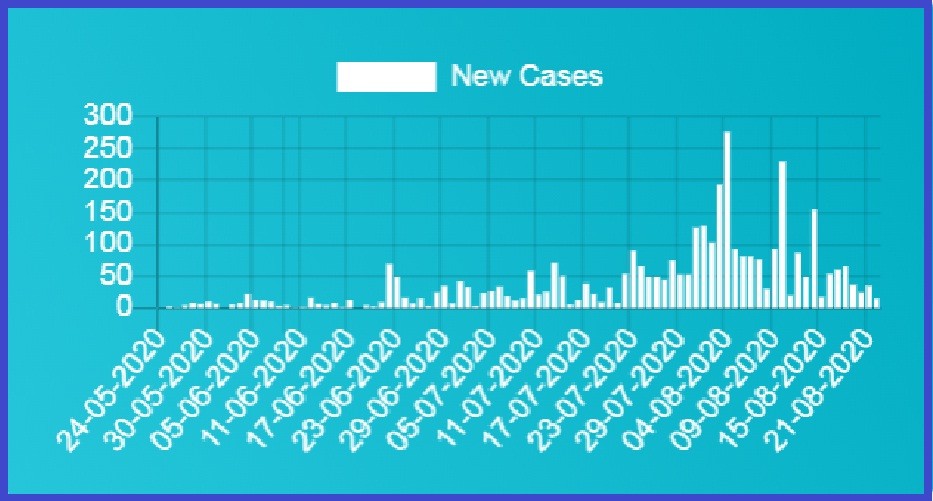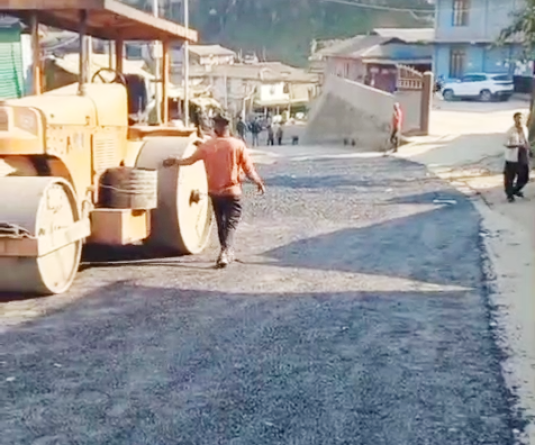Nagaland’s COVID-19 case status on August 21. (Image Courtesy: covid19.nagaland.gov.in)

Morung Express News
Dimapur | August 21
Today included, Nagaland’s COVID-19 graph has been quite comforting the past week. From a single-day high of 276 positive cases (out of 735 samples) on August 4, a significant reduction in case detection has been observed since then. The second single-day high of 230 cases was recorded on August 10, after which the state has witnessed largely double digit cases, except on August 14— a day that saw 154 cases.
It looks reassuring given the trend of the past few days. However, according to one front-line doctor, “we need not rejoice too soon.”
The doctor, who works in Dimapur, attributed the downtrend in cases to two factors— reduction in armed forces contribution to the daily case-detection and a reportedly calculated decision to stop collection of samples for three days (in Dimapur) to relax test backlog at the BSL laboratories.
Going by the overall statistics, he said that the numbers do not reflect the actual local situation as the total has been diluted by the high detection rate among the armed forces personnel, initially.
As of August 21, the armed forces contribution to the state total of 3619 was 43 percent or 1570 cases in absolute numbers. But it has significantly reduced over the week with only 3 cases today. Nil detection was reported from the armed forces on August 15.
“The armed forces have reduced movement of its personnel into the state. So, it has come down. They also told us that there will be movement but in a very controlled manner,” he said.
He said that the other factor that may have contributed to the low case-detection was a decision to temporarily stop sending samples for confirmatory RT-PCR tests to the BSLs for three days from August 18-20. According to him, there was a backlog of about a thousand test samples, which has now been balanced, while stating that sample collection, largely of civilian returness, would likely increase from August 22.
He added, “We may not get many cases from the armed forces. But from now onwards, we will be getting the real community picture. I feel that from now onwards whatever number (cases) we’ll get, that will be indicative of the local situation. So, I feel that the worst is yet to come.”
On when Nagaland would likely peak, he said, “Mid September, as per my conservative estimate.” He however added that it is tricky to assume without solid data.
Comprehensive contact tracing, he said, would be crucial to balancing things out if the situation turns for the worse. But he added, “The contact tracing team comprises of hardly 20 people (in Dimapur). How much can they do?”





